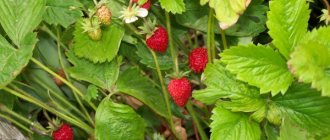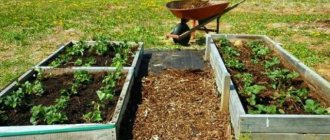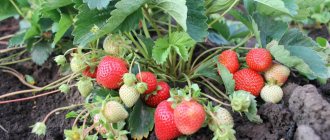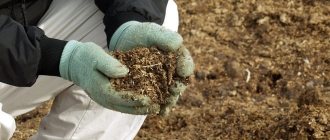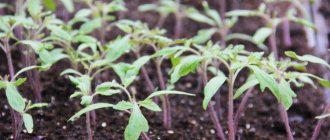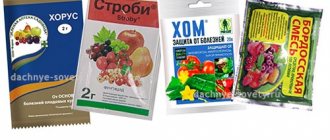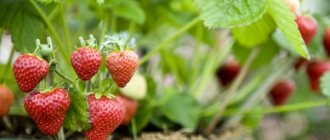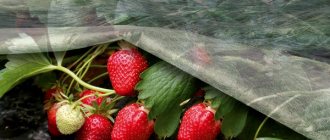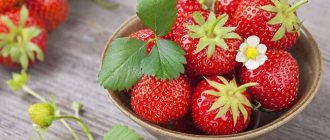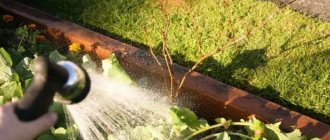When to fertilize strawberries in spring?
In the spring, immediately after the snow melts, strawberries are prepared for awakening and fertilizing:
- remove the layer of mulch that protected the plants from frost;
- clean strawberry beds from plant debris and dried bushes;
- loosen the soil so that oxygen reaches the roots more actively;
- as soon as 2-3 leaves are formed, the plant is fed;
- the second feeding is carried out shortly before flowering.
The first time the strawberries are watered only after the soil has completely lost the moisture it received from the melting snow.
The timing of fertilizing depends on the climatic conditions of the region and the current weather situation:
- For the Moscow region. In the middle zone, strawberry care, including fertilizing, begins in the second half of March.
- Ural and Siberia. Feeding is carried out from mid-April.
First feeding
The first fertilizing is carried out early in the spring, loosening the soil. It is necessary to apply fertilizers during the period of formation of the first leaves so that the plant receives strength to start the growing season.
How to apply the first fertilizing:
- Dry fertilizers can be scattered over melting snow. Granules with mineral substances, dissolving in snow puddles, will quickly penetrate deep into the soil.
- Apply in liquid form by watering the plants at the roots.
Thanks to the first fertilizing, it is possible to increase the productivity and immunity of strawberries.
Not all strawberry bushes need feeding - only those that are 2 or more years old. For up to two years, plants feed on fertilizers placed on the beds during soil preparation and when planting seedlings.
Before flowering
Before flowering, it is advisable to feed strawberries with any organic matter:
- manure;
- humus;
- bird droppings.
Fertilizer application options:
- Spread dry manure under the bushes and sprinkle it with a 2-3 cm layer of soil.
- Prepare a solution of rotted manure. For 10 liters of water take 2 cups of manure and 1 tbsp. l. sodium sulfate. For one bush - 1 liter of solution.
- Sprinkle humus over the soil - it is especially well absorbed by the roots.
- Feed with bird droppings. Mix chicken manure with water 1:20. The solution is infused for 3 days. For one bush – 500 ml of fertilizer.
Features of feeding depending on the age of strawberries
When planting strawberries, fertilizer is applied, which is enough for a whole year. Over time, food becomes less and less. That is why the age of the plants is taken into account when applying fertilizing.
Proper feeding of young plants
If strawberries are planted in the fall, then it is not necessary to feed them in the spring. Unless the necessary fertilizers were not applied during planting, or the gardener doubts that the supplied nutrition is sufficient.
If necessary, young animals are fed:
- Chicken manure solution - take 500 ml per 10 liters of water. Watering rate is 1 liter per bush.
- Sodium sulfate solution - dissolve 1 tbsp in 10 liters of water. l. fertilizers Per bush – 1 liter.
- 1 liter of mullein is diluted in a bucket of water, add 1 tbsp. l. sodium sulfate and water at the root - 1 liter for each bush.
What and how to fertilize adult plants?
Adult bushes definitely need fertilizing. If you don’t give strawberries fertilizer in the spring, you won’t see a good harvest. The soil, depleted over time, cannot provide fruit-bearing plants with the necessary amount of nutrition, as a result, the berries become smaller and the yield decreases.
Features of feeding strawberries aged 2 years or more:
- At the age of two, strawberries are given organic matter and mineral fertilizers, in the third year they are limited to mineral fertilizers, and the following year the combined version is repeated.
- If you apply the wrong amount of fertilizer - too little or, conversely, in excess - the desired result will not be achieved.
- Nitrogen fertilizers are applied at air temperatures above +15 °C - there is no need to stimulate the growth of green mass ahead of time, since with unstable temperatures and unstable heat there is always a risk of return frosts.
- When feeding strawberries with liquid rotted manure and bird droppings, they water not only the soil, but also the above-ground parts of the plant - leaves and stems.
- It is recommended to fertilize adult strawberries with ash - 300 g per 1 square meter. m. Ash is added during loosening.
Signs of nitrogen deficiency
Nitrogen is one of the important components, without which full growth and development of strawberries is impossible. To understand whether the plant receives enough nitrogen, you need to take a closer look at the appearance of the bush.
The main signs of nitrogen deficiency are the following:
- the plant grows and develops too slowly;
- the leaves are not large enough, and the color is dull green, has a yellowish tint;
- shoots are too short or thin;
- The flowering period is accompanied by the absence of buds or too few of them.
If you notice these signs on your strawberries, they will definitely need a spring fertilization procedure. This will give the plant the strength to actively develop, and in the future you will get a high yield.
source
Mineral fertilizers
Spring feeding from the age of 2 becomes mandatory for strawberries. Gardeners have to choose between mineral and organic fertilizers.
Experts and experienced gardeners believe that mineral supplements with micro- and macroelements are extremely beneficial for strawberries. Especially important for her:
- Nitrogen. The main “building material” for green mass of plants. This element is abundant in organic matter, as well as in some mineral compounds. The most popular nitrogen-containing fertilizer is urea.
- Potassium. The abundance of fruiting, the size and commercial characteristics of the berries, and the quality of wintering of the plant depend on it.
- Phosphorus. This element affects the juiciness of berries, their taste and aroma. The development of the root system depends on phosphorus; it is also a source of energy for cells.
Ammonium nitrate
Ammonium nitrate is used for spring fertilizing as a source of nitrogen, but only on non-acidic soils. It is usually used on alkaline soils as it reduces salinity.
Saltpeter is applied in the form of granules - it is scattered near the bushes. Application rate – 10 g per 1 sq. m. Fertilizer is also applied in liquid form - 20 g of saltpeter is dissolved in a bucket.
To prevent root burns, mineral fertilizers are applied only after heavy watering.
Urea
Urea or carbamide is the most popular nitrogen fertilizer recommended for the first fertilizing of strawberries. Its effectiveness is associated with good digestibility.
Urea application options:
- Dry. Urea granules are scattered over the soil, then loosened. The norm is 5-10 g per 1 sq. m.
- In the form of a solution. 15 g of urea are dissolved in a bucket of water. The solution is used for watering at the root - 1 liter per bush, as well as for spraying.
Complex fertilizers
Complex fertilizers have a balanced content of useful elements. Multicomponent fertilizers include, for example, azofoska, nitroammofoska, etc. Dosage and application - according to the instructions.
Fertilizers with humates
These mineral feeds with humic compounds and microelements are very well absorbed by plant roots. Such preparations quickly restore the nutritional balance even in the poorest soils.
In spring, strawberries can be fed with the preparation “Gumate-7 + Iodine”.
Urea for processing currants in spring - properties
In the natural environment, this compound is not found in concentrated forms, since the substances obtained during the chemical reaction are characterized by increased solubility in any natural solvents. The main value of urea is the increased content of freely available nitrogen in dry crystals, the amount of which is about 40–60% of the total mass. This is an essential element for the growth and development of any plant, and currants are no exception in this regard.
Urea is white crystalline granules obtained by condensation of sodium compounds from ammonia in an environment with carbon dioxide at elevated temperature (+140°C) and pressure (200 atm).
It is found in almost all tissues and structures of the plant organism, and also plays a key role in it. Its main task is to provide the plant with protein compounds, which ensures the uninterrupted production and growth of cells, as well as specific tissues. In addition, nitrogen is the main element of the photosynthetic apparatus of every plant organism.
It is part of the so-called chlorophylls, thanks to which photosynthetic processes occur in leaf cells. And their activity is the main condition for the accumulation of carbohydrates and other important compounds in plant tissues. Special attention should be paid to the protective properties of urea.
Did you know? Urea was first synthesized in 1828
from inorganic compounds.
The author of the discovery was the German chemist and one of the founders of organic chemistry, Friedrich Wöhler. Thanks to its periodic use, plants’ overall immunity against characteristic infections increases. In addition, in combination with copper sulfate, it is possible to obtain a remedy that has a reliable effect against the main ailments and insect pests of currants. And this allows the solution to be used as the best preparation for protection against almost any disease or crop pest.
Therefore, neglect of fertilizing with urea is often the main reason:
- inhibition of growth and development of currants;
- the appearance of pathologies of green mass (spots, curling, yellowing, death of leaves);
- deterioration of crop yields;
- shedding of berries;
- damage to shrubs by fungal and parasitic infestations.
The appearance of pathologies of green mass (spots, curling, yellowing, death of leaves).
Organic fertilizers
Strawberries are very responsive to organic fertilizers, which supply them with micro- and macroelements. Natural compositions replenish nutritional reserves and are quickly absorbed by the roots.
Chicken droppings
Effect of spring feeding with chicken manure:
- increase in productivity;
- improving the taste of berries.
Prepare the fertilizer as follows:
- Dissolve 1/2 liter of semi-liquid litter in a small volume of water.
- Bring the total volume to 10 liters.
The soil is watered with a solution of manure, at a distance of 5-10 cm from the plants. This fertilizing is applied in early spring every 2-3 years.
Caution should be used when applying bird droppings. If you violate the proportions, you can burn the roots. Water the bushes especially carefully - do not allow the solution of bird droppings to get on the leaves and flowers.
Mullein infusion
Mullein is a universal fertilizer that can increase yields by 40-50%. It contains many micro- and macroelements - magnesium, calcium, potassium, phosphorus, nitrogen.
Rotted mullein is used to feed strawberries - it is processed twice in the spring.
How to cook mullein:
- Mix manure and water 1:1.
- Close the container with a lid.
- Leave for a week in a warm place. During fermentation, bacteria, microbes, and parasites die in the mixture.
- When the manure is infused, it is used for spring feeding.
- Before use, mullein is diluted with water in a ratio of 1:10. A quarter cup of urea and 1/2 cup of ash are added to the solution.
Mullein is poured directly under the bushes or between the rows.
Humus
Rotted organic matter contains a lot of easily digestible substances. Humus is manure that has completely decomposed. Gardeners consider humus the best spring feeding. The norm for using humus is 5 kg per 1 sq. m.
Humus is very easy to use - it is scattered between the rows. This type of fertilizer is especially relevant for bushes 2-3 years old - humus covers the bare roots.
Humus is prepared from manure, spreading it with weeds. After 7 months of rotting, the fertilizer is ready for use.
Benefits of humus:
- Nutrients and microelements are in a form that is easily digestible for plants.
- Improves soil structure.
- Creates favorable conditions for growth and fruiting.
- It has a long-lasting effect – humus provides the plant with nutrition for about a year.
Application of urea
When feeding any plant with urea, in particular strawberries, the main thing is not to exceed the dose, otherwise the berries will be tasteless and watery. However, if you do not fertilize at all, the berries will be small. Therefore, it is necessary to feed the crop, the main thing is to fulfill all the requirements.
Fertilizing of the crop is carried out three times per season:
- In the spring. As soon as the snow melts and the plant is ready to grow, it needs to be fertilized with urea.
- After the harvest. It is necessary to fertilize so that the crop survives the winter well (the best time is August).
- In autumn. To get a good harvest in the next season, fertilizing in the fall is simply necessary.
Professional gardeners note that fertilizing strawberries with urea in the spring is done only by foliar application, this guarantees an excellent harvest. How to dilute urea for this feeding of strawberries, preparation: for this you need to observe the proportion - dissolve a large spoonful of fertilizer in a couple of liters of water. The resulting composition is sprayed.
Fertilizing strawberries with urea
The appearance of the strawberry will tell the gardener what substances it lacks for development and fruiting.
If there are not enough nutrients in strawberries, then:
- its foliage turns yellow;
- small berries;
- thin stems.
Therefore, applying fertilizers on time is an important stage in growing crops. Urea directly provides strawberries with all the substances they need.
Folk remedies
In addition to generally accepted organic and mineral fertilizers, many gardeners use folk remedies. All of them are based on affordable and natural ingredients.
Yeast
Yeast bacteria contribute to the accelerated decomposition of organic matter and the absorption of nutrients by the plant, so they are used together with organic matter.
How to prepare fertilizer:
- Fill a 3-liter jar with warm water to the level where the walls begin to narrow.
- Pour yeast into the jar - 25 g raw or 10-12 g dry.
- Add 5 tbsp. l. Sahara.
- Stir and place in a warm place.
- When foam appears, pour the solution into a 10-liter watering can or bucket. Add warm water to full volume and water the strawberries.
To feed strawberries, use a “playing” solution. Fermented ones cannot be used. A 2-3 day mash is not suitable - it already contains alcohol, and the bacteria die.
The rate of watering with yeast solution is 0.5-1 liters per strawberry bush.
Ash
Wood ash contains a lot of useful substances that stimulate the growth of strawberries. It contains a lot of iron, phosphorus, sulfur and potassium. This is an easily digestible and affordable fertilizer. Ash can be scattered or used as a solution.
Thanks to the addition of ash, the sweetness and shelf life of the berries increases.
How to use ash:
- When loosening the soil, ash is poured into the rows - approximately 1 cup per 1 square meter. m.
- After scattering the fertilizer, water the strawberries generously.
- The ash is diluted with water - 1 glass in 1 liter of hot water. Stay warm at night.
- The next day, the infusion of ash is diluted in a bucket of water - the plant is watered with this solution. Fertilizer rate – 1 liter per 1 sq. m.
The ash solution is used for watering at the root and for foliar spraying - carried out during budding.
Dairy
The benefits of fertilizing with fermented milk products are based on the beneficial effects of bacteria. Feeding effect:
- plant nutrition (in fermented milk products - sulfur, phosphorus, calcium, nitrogen, amino acids, etc.);
- increasing immunity;
- prevention of fungal diseases;
- activation of biological processes in the soil.
For nutrition, use fermented milk whey diluted with water 1:10. Water the soil around the bushes with the solution.
Store-bought pasteurized product is not as healthy as homemade whey. How to prepare the whey:
- leave the milk in a warm room;
- wait for complete souring;
- strain and the whey is ready.
You can't overcook milk. If it becomes moldy or rancid, the beneficial bacteria will die.
It is recommended to combine fermented milk fertilizer with organic matter - chicken droppings or mullein.
Boric acid
Boric acid is used to protect berries from rotting and cracking. Plants treated with this drug bear fruit earlier, and the berries have a better taste.
Boric acid is used mainly on alkali soils. The drug is applied during budding and flowering.
Rules for using boric acid:
- 2 g of the drug is diluted in 200-300 ml of warm water.
- The resulting solution is added to 10 liters and the beds are watered with it.
Ammonia
Ammonium solution contains a lot of nitrogen, which is why it is used for spring feeding. The ammonium form of nitrogen is used for spraying when the first leaves appear.
Feeding effect:
- nutrition through leaf plates;
- increasing immunity;
- soil deoxidation.
The solution is prepared by mixing 40 ml of ammonia with 1 liter of water.
Iodine
Iodine is not only a good antiseptic, but, according to gardeners, it is an excellent fertilizer. It has been noted that iodine:
- promotes accelerated growth of bushes;
- increases productivity.
How to make iodine solution:
- drop 5-10 drops of the drug into 10 liters of water;
- mix the liquid and spray the plants.
The first time strawberries are sprayed with iodine before flowering. After the first treatment, a second one is carried out - 10 days later. The solution is also watered at the root of the strawberries.
An iodine solution is prepared in a glass or plastic container.
Herbal infusions
Herbal infusions enhance photosynthesis of plants, increase their immunity, and if you add tomato tops, they repel pests. It is best to use nettle, wormwood, coltsfoot, chamomile, dandelion and wheatgrass roots for infusions.
How to prepare the infusion:
- Place the greens in a container and fill it to the top.
- Fill the grass with water - all the way to the edge.
- Infuse the herb in a sunny place for 5 or more days.
Dilute 1 liter of the resulting infusion in 10 liters of water. Water the strawberries with the resulting solution every two weeks.
Fertilizer application methods
The rules and terms for applying fertilizing are mandatory. Gardeners have a choice - what fertilizer to use and how to apply it.
Foliar feeding
These feedings are very effective and consist of spraying or dusting the above-ground part. Leaves and stems quickly absorb nutrients. Therefore, the first feeding is spraying with urea.
How to spray strawberries:
- In the morning or evening, so as not to burn the leaves.
- The best option is small drops, large ones fall down quickly.
- Spray the entire bush - from bottom to top.
Dusting is used after irrigation - for better adhesion of the ash to the plant and soil.
Root feeding
Root feeding involves adding fertilizer to the soil. There are several options:
- watering with liquid fertilizers - infusions and solutions;
- scattering granules on the soil - around plants;
- scattering of granules followed by loosening.
The result comes later than when using foliar fertilizing. It takes time for the nutrients to decompose to a state in which strawberry roots can absorb them.
The period of absorption of different elements depends on the type of feeding. In complex fertilizers, the components are ready for absorption after different times. Therefore, when applying fertilizing, they draw up a schedule - when and what kind of fertilizer to apply.
The greatest effect is achieved by combining different types of fertilizers. For example, you can use the following scheme:
- As soon as it gets warm, spray with urea or water with mullein infusion. Mulching – with humus or compost.
- After a couple of weeks, add yeast infusion and dust the soil with ash.
Reviews from gardeners about fertilizing
Ksenia, 25 years old, amateur gardener, Kineshma. Every year I feed the berry garden with yeast. Such nutrition makes the bushes powerful, with many leaves and peduncles. Fertilizing significantly increases productivity, improves the taste of berries, and increases their size.
Dmitry, 40 years old, summer resident, Maloyaroslavets. I fertilize strawberries the second year after planting. I alternately add organic matter and mineral fertilizers. In the spring I also spray it - as soon as young greenery appears. I use rotted manure or bird droppings - I prepare an infusion from them, and then dilute them with water. If you don’t feed strawberries, you won’t see large and tasty berries.
The volume and quality of the harvest depends on the timeliness and composition of spring fertilizing. The rules and deadlines are the same for everyone, but the choice of fertilizer is up to the gardener. For feeding, you can use organic matter, mineral fertilizers, and folk remedies.
How does a lack of nutrients manifest itself in crops?
If the bush suffers from a lack of useful elements, the castings develop more slowly than usual, while remaining small with an unsaturated pale color. If you noticed such signs last year, be sure to take care of your berry garden next spring. How to feed remontant raspberries in the spring? Add urea - 10 grams or replace it with ammonium nitrate - 15 grams. The proportion is calculated for 1 m2. Sometimes the bushes are topped with a solution of manure in a ratio of 1:8, mullein - 1:5, bird droppings - 1:10. Before watering, soak the fertilizers in water and let them sit for 1-2 days. A 10 liter bucket will be enough to moisten the soil for 3-4 currant or raspberry bushes.
